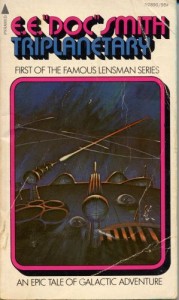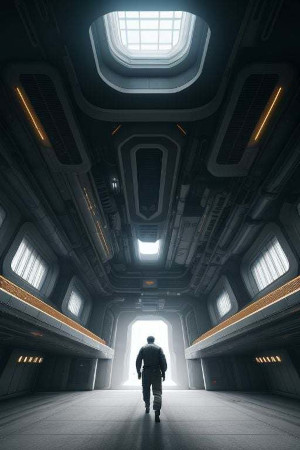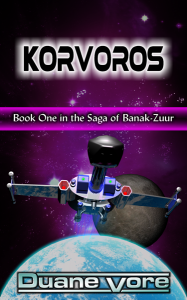2013
Aug
09
The Birth of an Epic Space Opera
I can't say that I squandered my youth reading science fiction. I'd call it more of an investment. It has been claimed that science fiction is the best of all genres because it tackles issues that most of the others don't even know about. But as a kid, I wasn't so much interested in issue tackling. I was interested in space adventure and wonder, and that seemed to be found in few places outside space opera. And some mighty large-scale space opera.
No, I'm not talking the scale of Star Wars. That's the small stuff. I'm talking about Edward Elmer (E.E.) "Doc" Smith's Lensman series. It was a runner-up in Hugo's 1966 Best All-Time Series, and I take some issue with their ranking. Barsoom ahead of the Lensmen? Fat chance! Smith really was a "Doc," with a Ph.D. in chemical engineering, and is often credited as being the father of space opera.
 Smith wrote the Lensman series between 1937 and 1948. He threw into them his knowledge of science and engineering, creating technologies that delighted and intrigued me: inertialess drive, cosmic screens, the hyperspatial tube. Heck, there is probably not much in either Star Wars or Star Trek that Smith didn't write about before the mainstream world even knew what science fiction was.
Smith wrote the Lensman series between 1937 and 1948. He threw into them his knowledge of science and engineering, creating technologies that delighted and intrigued me: inertialess drive, cosmic screens, the hyperspatial tube. Heck, there is probably not much in either Star Wars or Star Trek that Smith didn't write about before the mainstream world even knew what science fiction was.
But what impressed me the most was the sheer scale of the story. It spans two billion years and two galaxies. Dozens of races in complex interplay. Battles with not thousands of ships, but millions. Planet-sized battle stations (and you thought the Death Star was original!) Whole planets used as weapons, some moving faster than light. I literally wore out multiple paperback copies of those six volumes.
My first attempt to recreate that scale was in high school, where I planned and started a three-volume story consisting of The Rise of the Galactic Network Command, Intergalacticus,and The Fall of Ottogorth. I can't say that I got too far with it, but I did come up with some pretty imaginative and fascinating technologies of my own. And the scale was even bigger, but it was, after all, a fairly blatant rip-off.
I don't intend to pursue it anymore, but the idea of humongous-scale space opera remained.
Over the years, of course, being a writer at heart, stories developed. The vision of a mysterious invader from space crashing on Earth and enlisting the help of a teenager later became Korvoros. That idea might have even come from The Green Lantern. I still see that first scene I pictured, which isn't in the book at all. One of my coherent and consistent narcolepsy dreams became A Hierarchy of Gods almost scene for scene. A photomicrograph in a biology book became part of The Humanity Experiment. I don't even remember where some of the stories and ideas that went into stories came from, but as they evolved in my subconscious, the driving force of a Smithian scale remained.
And as they evolved, they came to a focus as different vignettes of one gigantic, humongous, all-embracing, ulta-expansive, trans-cosmic story, one that dwarfs even the vision of E. E. Smith. It takes place in a universe far older and far larger than astronomers imagine and confronts a enemy even worse than the Eddorians. It all began some 200 trillion years ago (thought the universe was only 13 billion years old, didn't you?) and isn't yet over. There are no mammoth space battles involving millions of ships, but there are unlikely heroes over a period of a century, more or less, who get pulled into a battle plan that started some four and a half million years ago.
Still, there are powers that Smith never anticipated, and machines of war calculated to wipe out entire galaxies. If you like big, this gets big. There are ghosts, slow impalement, killer kids, interspecies romance, mind transfer, mysteries, synthetic spaces, thought beams, empires, parallel universes, and more. Something for everyone.
The First Universal War was lost. And the Second Universal War will be the last.
There will be eight books in all, each one standing on its own, but which fit together into an epic. As a brief introduction:
Korvoros
A lonely Earth boy finds himself enlisted in the aid of a bizarre alien, and gets pulled into all three of the "greatest mysteries of the universe," at least one of them reaching back 70,000 years — or farther. The mystery of the Dead Zone, from where no one returns, seems to involve him.
A Hierarchy of Gods
When two unlikely aliens get stranded on Earth, a bright college student bucks the restrictive laws of Earth's Academy and the limits of his own moral code in a daring and seemingly impossible plan to help them get home. In the process, he runs afoul of powerful enemies, both those on Earth, and those who pursued the aliens here.
The White Shamitz
Two young people accidentally activate a piece of alien equipment millions of years old and find themselves spirited to a planet apparently beyond the limit of the observable universe. They discover a collection of devices — but not mechanisms — of incomprehensible power, and with them the mystery of how their creators, who had spread across billions of light-years, could have utterly vanished.
The Humanity Experiment
The Kyattoni, convinced that almost identical and astronomically unlikely events to have happened on Earth less than a century apart may be a clue to something bigger, they conduct a reality experiment to find out. When their carefully laid plans are wrenched from their control and the impossible starts happening, they can only conclude that someone is experimenting on them.
The Labyrinth of Space
A pair of young people, both of whom have theoretically impossible origins, meet and get involved in each other's missions. In a trek from galaxy to galaxy, they pursue a line of clues that lead to the enemy that has evaded civilization for over 70,000 years. And beyond, to a more powerful enemy no one ever knew existed.
A Remembrance of Evil
Trying to save a young girl from a horrendous death, a private investigator, saddled with a pair of abandoned children, must visit the "Planet of Death," Trigdru. He finds that virtually every monster from every culture across space, and every "magical" power, actually exists there. Every one, that is, except the one they brought with them.
The Black Tower
The new Lord Principal of Briannon is coupled with a descendant of the old dynasty to carry The Great Seeing Stone and the invaluable Crown of Briannon on a dangerous mission to the Black Tower. No one knows what the tower is as not even the powerful beings from the skies can penetrate it. What awaits inside is something no one could have anticipated.
Tetragrammaton
Four young couples — the Facets of the Tetragrammaton — come together as the ultimate weapon and last chance against a force that has terrorized the universe for 200 trillion years. Nothing ever created by any civilization can penetrate a 31st-order convolution barrier. Nothing, that is, except the enemy's own thought-beams. This will be the last chance in all of eternity to defeat them.
I hope you enjoy them.
















Comments
There are no comments for this post.
You must be logged in to post a comment.